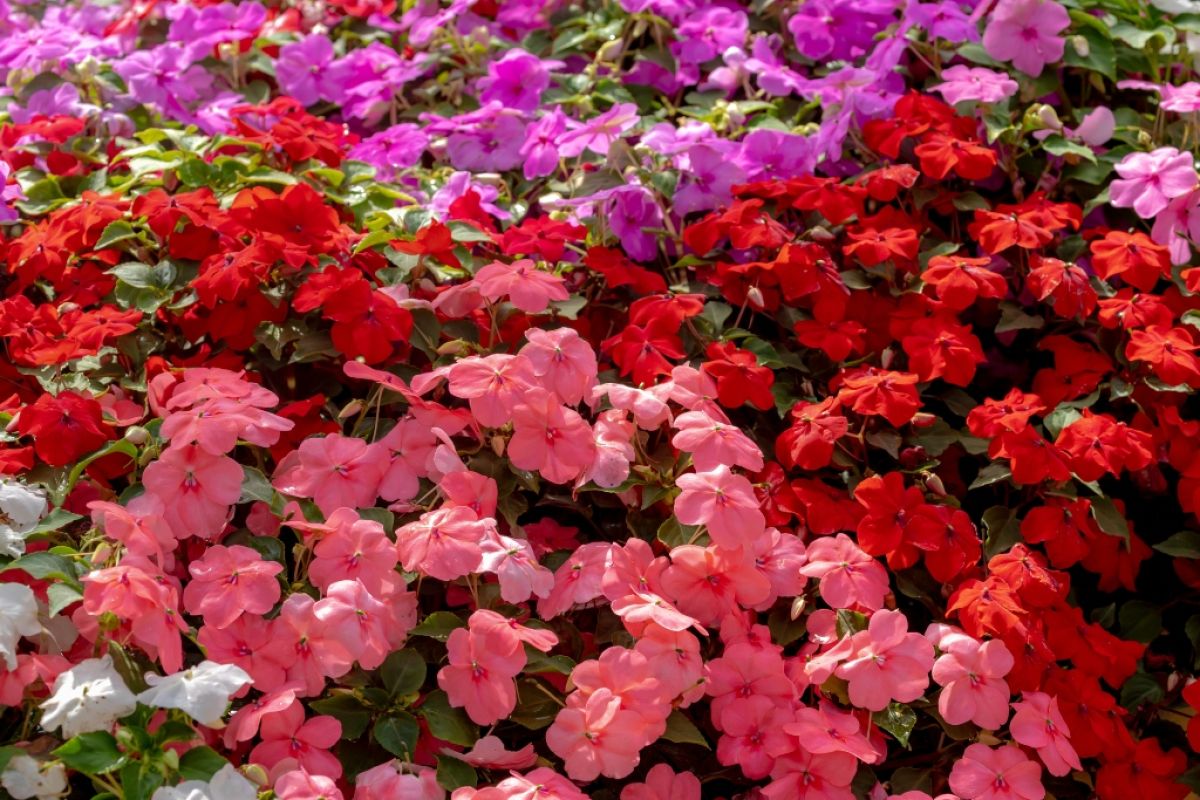Impatiens, a native of tropical Asia, is now well established as a staple in our annual gardens. It is one of only a few plants that bloom well in shade gardens. Don't ever try to winter it over indoors, however, as it won't cooperate and is susceptible to pests.
It was grown in English gardens over 400 years ago, and the botanist Gerard wrote, "the tiny seeds must be sown in the beginning of April in a bed of hot horse dung...then replanted into the most fertile place in the garden when the plants have gotten three leaves apiece."
I prefer to buy mine as plants from a nursery. There are a number of different colors, and some are even double and almost like tiny roses.
They have been called many different names: balsam, touch-me-nots, jumping Betty, impatiens, and busy Lizzie. There is even a six-foot hardy plant introduced to England from India in 1839 that became naturalized on the edges of British canals and streams. J. D. Hooker, an English botanist, described it as "desperately wicked" and "a terror to botanists." Fortunately, it does not seem to have made it to North America, so we were spared.
Most gardeners I know find it convenient to buy this easy-care annual for their pots and shade beds each spring, and delight in growing such undemanding annuals.
This is Moya Andrews, and today we focused on touch-me-nots.










